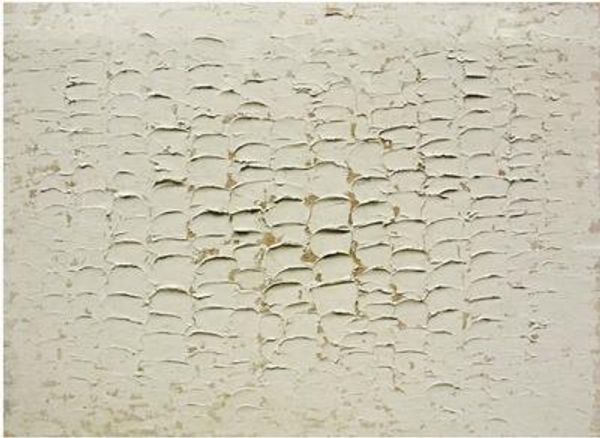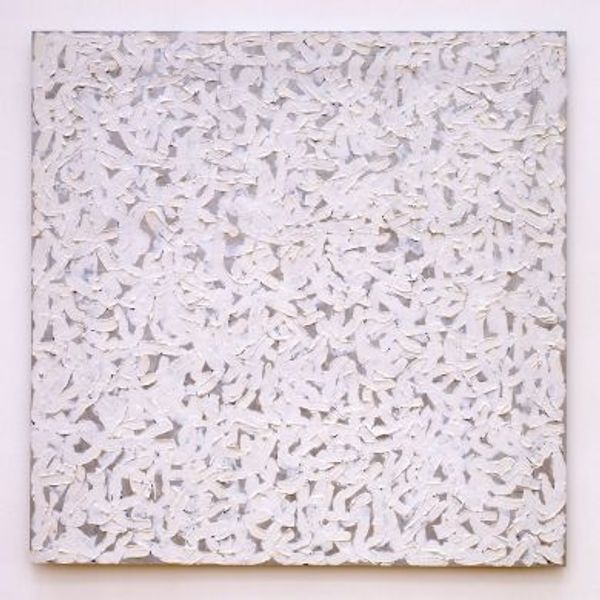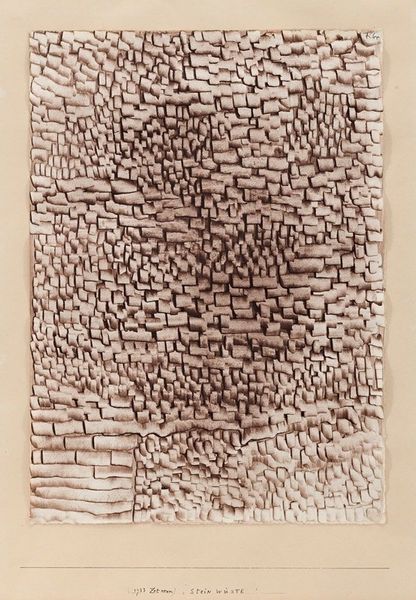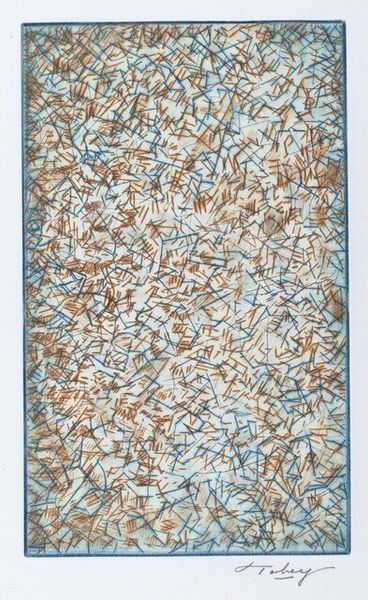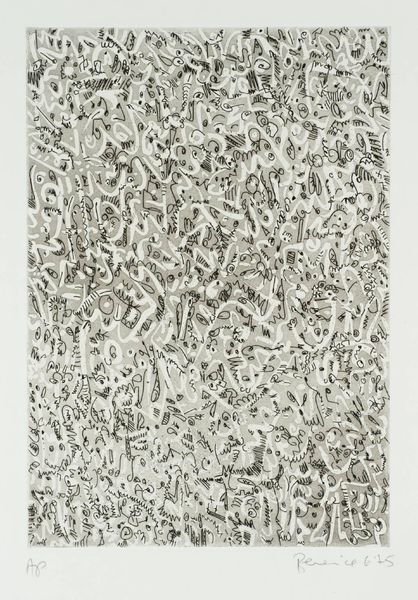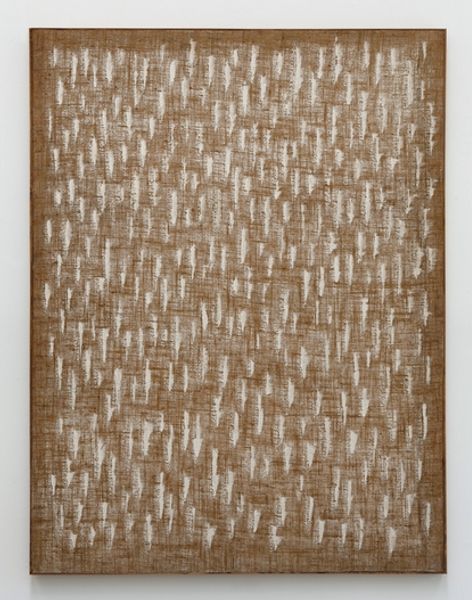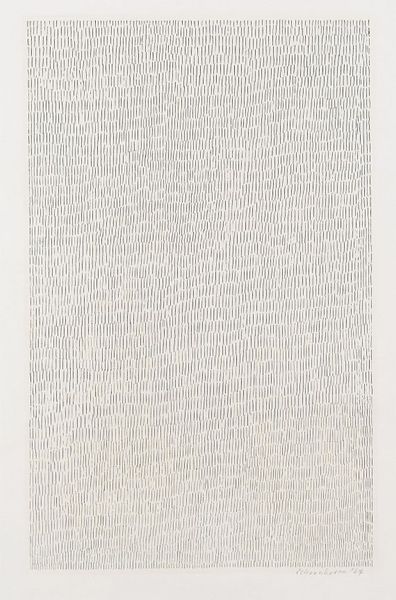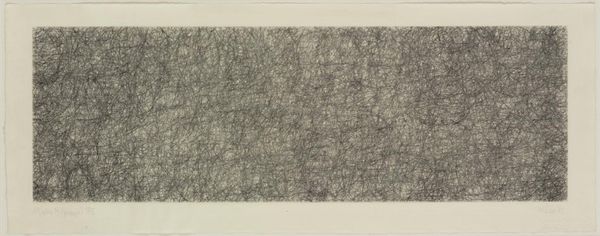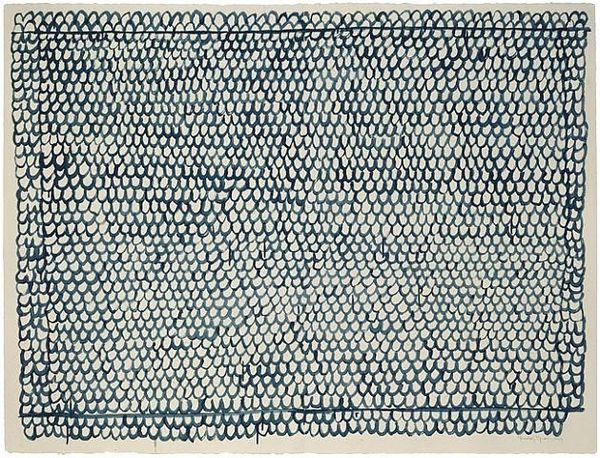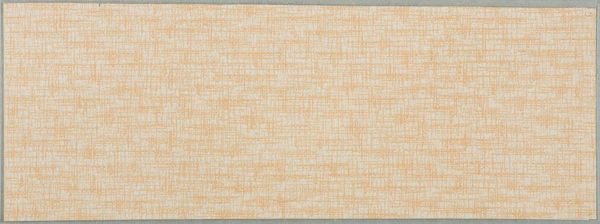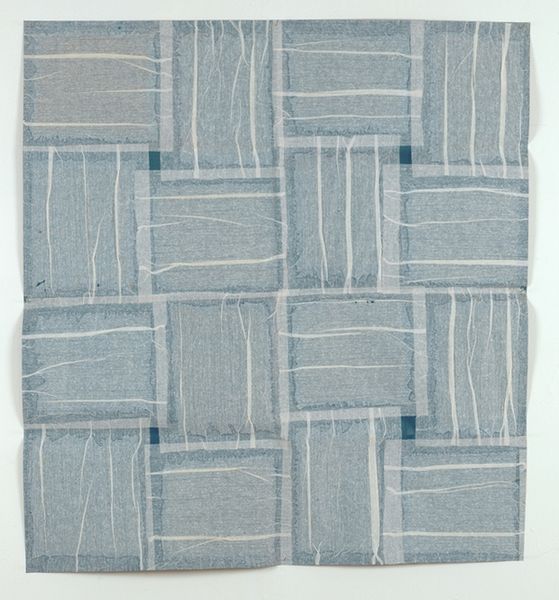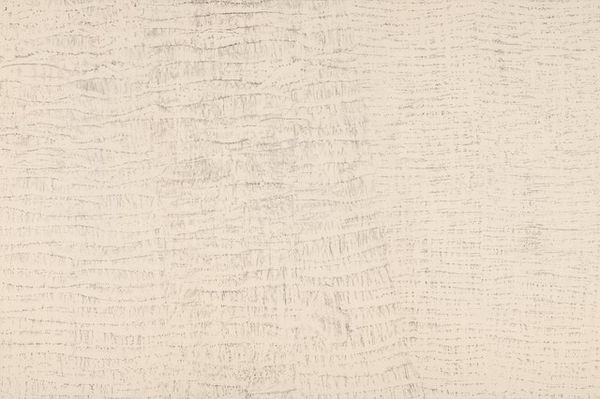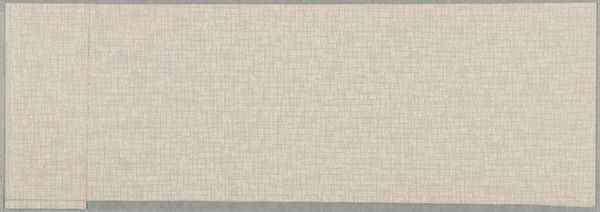
#
natural stone pattern
#
rippled sketch texture
#
naturalistic pattern
#
pattern
#
geometric pattern
#
abstract pattern
#
organic pattern
#
intricate pattern
#
pattern repetition
#
layered pattern
#
organic texture
Copyright: Alberto Burri,Fair Use
Curator: The surface… it's arid, almost petrified. I find the monochromatic palette deceptively dramatic. What’s your initial take? Editor: It feels like looking at parched earth. There's something very tactile about the texture; I can almost feel the dryness. But let's provide some context. This is Alberto Burri's "Cretto Grande Bianco," created in 1982. Curator: It's compelling how Burri uses material to invoke broader questions. This piece speaks to fragility, especially considering the period in which it was created and the context of postwar Italy, where destruction and rebirth were prominent themes. Editor: Exactly. Thinking about Burri’s process is key—the way he manipulates materials like clay and then subjects them to intense processes, the firing and cracking we see here. It mirrors the forces acting upon society. Curator: There’s a resonance with the land itself and the exploitation of our natural world, given the association with cracked earth and arid landscapes. How do we, as a global community, move forward considering ecological devastation and colonial exploitation? Editor: Good point. It's vital to note that he’s actively engaging with materiality, pushing the boundaries of what constitutes sculpture or painting. Burri used readily available resources. It wasn’t marble from Carrara; it was ordinary clay transformed through labor and firing into this... rupture. Curator: The Cretto becomes a scar, a monument to destruction but also to resilience. Looking through the lens of trauma theory helps to examine this. Is there potential in ruins and rebirth? Can communities heal through the collective confrontation and acknowledgement of past violence? Editor: Thinking about labor and the amount of effort—the human hand involved—is important. Also the work's whiteness is interesting; is this purity or something else? This forces the viewer to consider the artist's intervention, the firing process itself, which becomes almost violent. Curator: Well, Burri gives us no easy answers, but raises difficult questions of historical and environmental trauma in ways that are relevant today. Editor: Agreed. It all begins with recognizing how the making and materials mirror broader systems, I suppose.
Comments
No comments
Be the first to comment and join the conversation on the ultimate creative platform.
